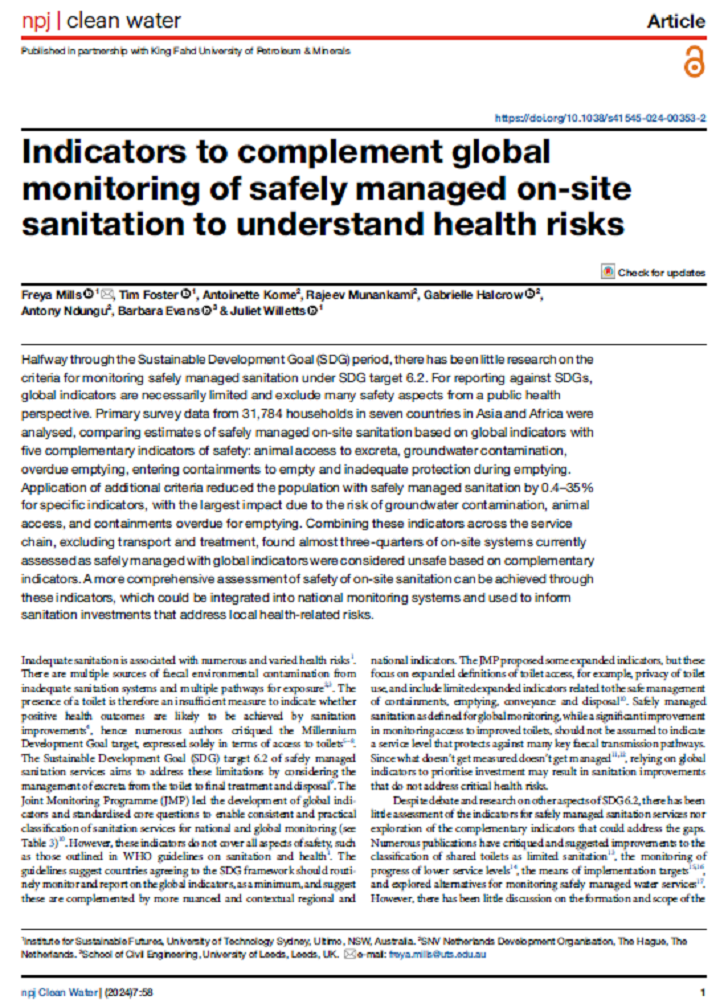Indicators to complement global monitoring of safely managed on-site sanitation to understand health risks Freya Mills, Tim Foster, Antoinette Kome, Rajeev Munankami, Gabrielle Halcrow, Antony Ndungu, Barbara Evans & Juliet Willetts (2024)
This document highlights significant occupational health and safety risks for sanitation workers during the emptying of on-site sanitation systems. A major concern is the direct exposure to health risks, as many workers enter containments like pits and septic tanks, with only 8% of systems emptied without such entry. Risks are higher in rural areas, where self-emptying is more common, and in urban settings where sanitation systems often pose greater hazards. The authors stresses the need for better enforcement of safety protocols, particularly in promoting the use of mechanical emptying methods and ensuring proper PPE use to protect sanitation workers from health hazards.
Bibliographic information
Freya Mills, Tim Foster, Antoinette Kome, Rajeev Munankami, Gabrielle Halcrow, Antony Ndungu, Barbara Evans & Juliet Willetts (2024). Indicators to complement global monitoring of safely managed on-site sanitation to understand health risks npj Clean Water
Filter / Tags
Recommended by SuSanA (other than SuSanA publications)Faeces or faecal sludgeEducatorsPoliticians and local decision makersPractitionersResearch publicationsEnglishImport to Sanitation Workers PlatformHealth & SafetyHealth & Safety
Downloads
Indicators to complement global monitoring of safely managed on-site sanitation to understand health risks
Type: application/pdf
Size: 0.77 MB

